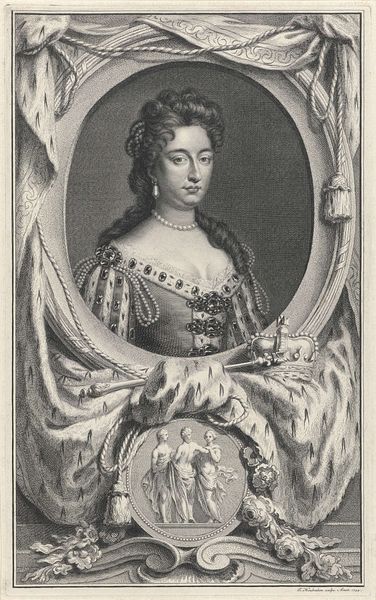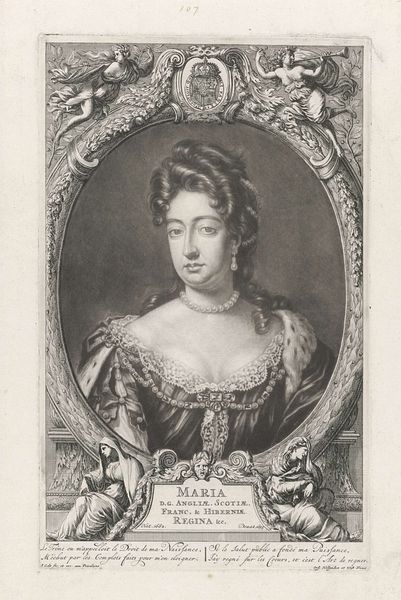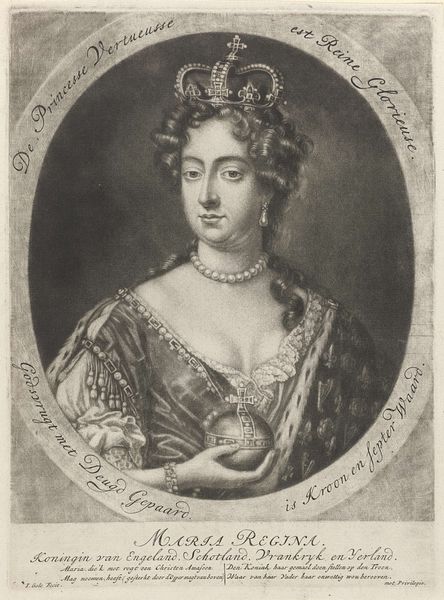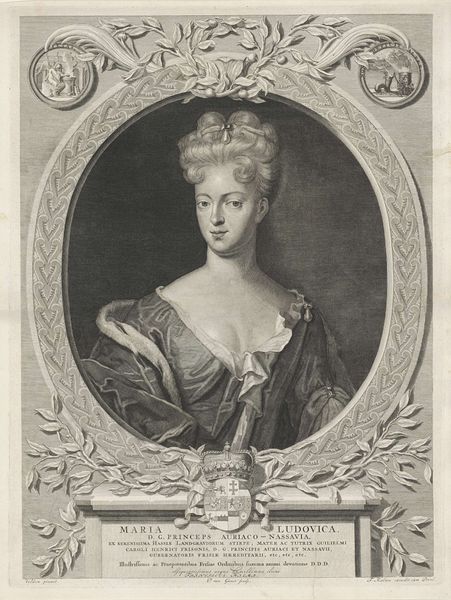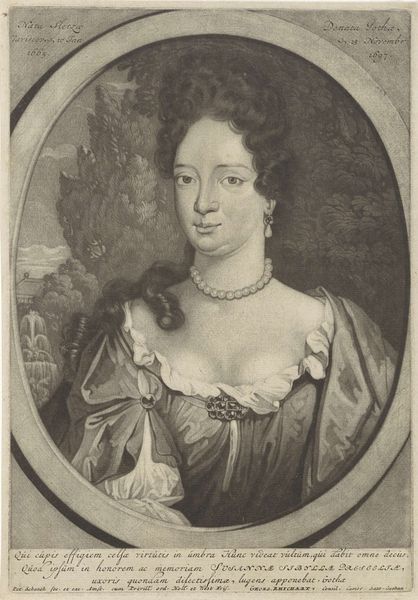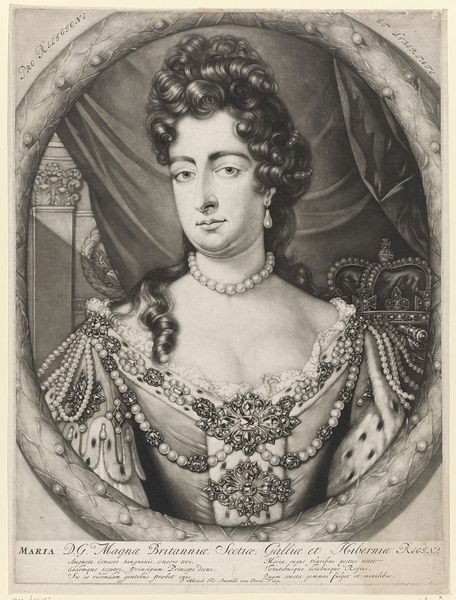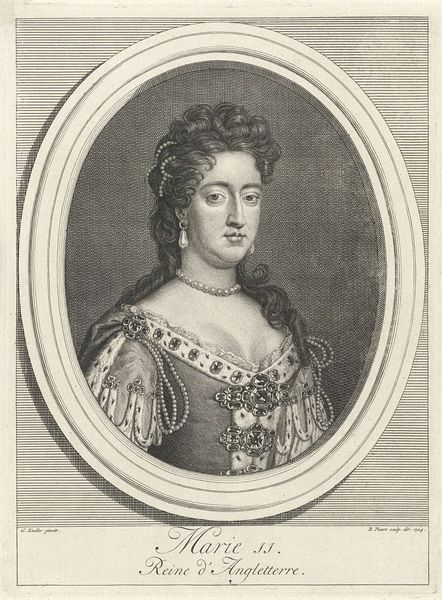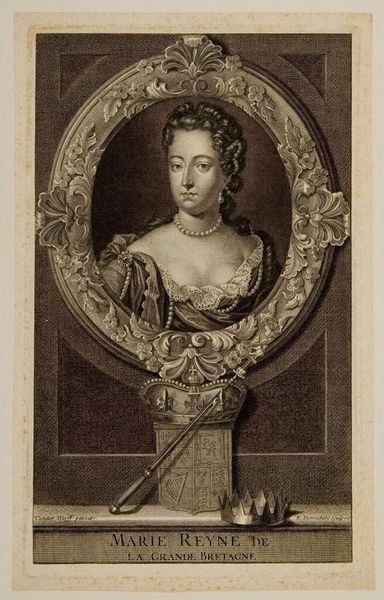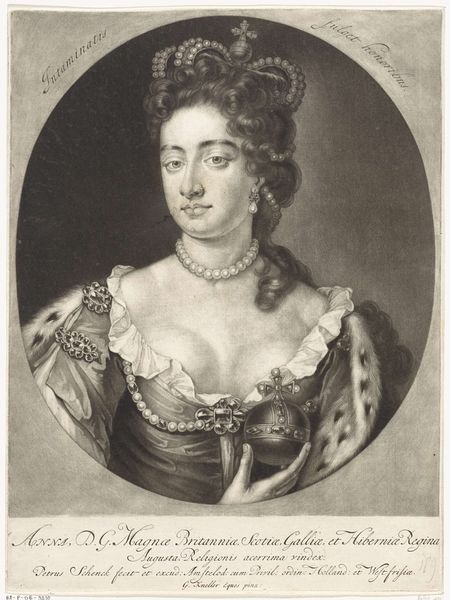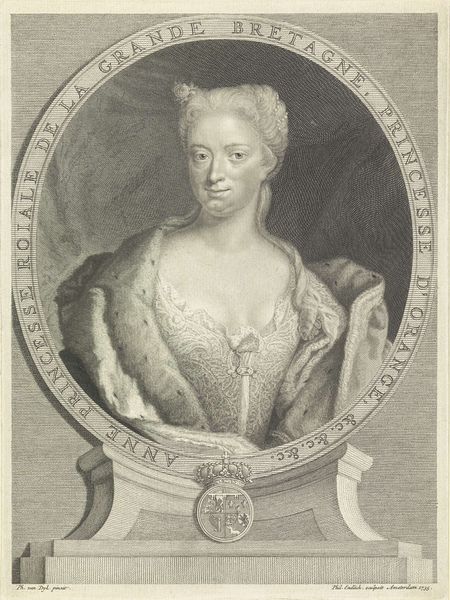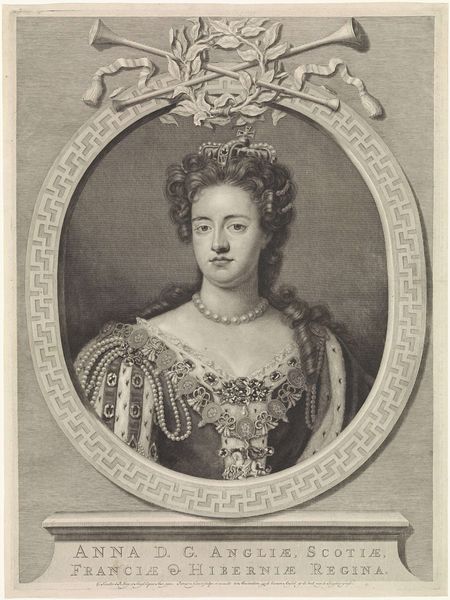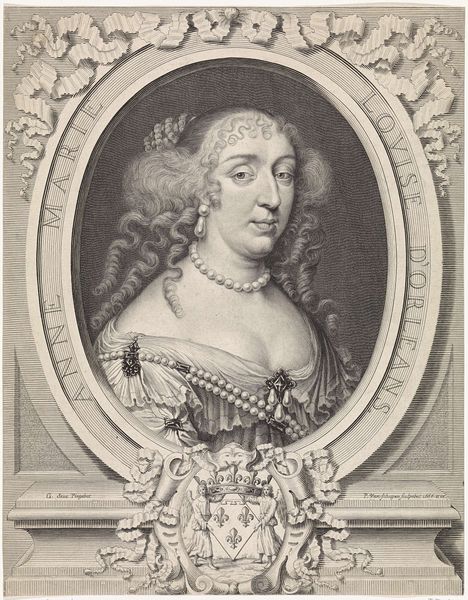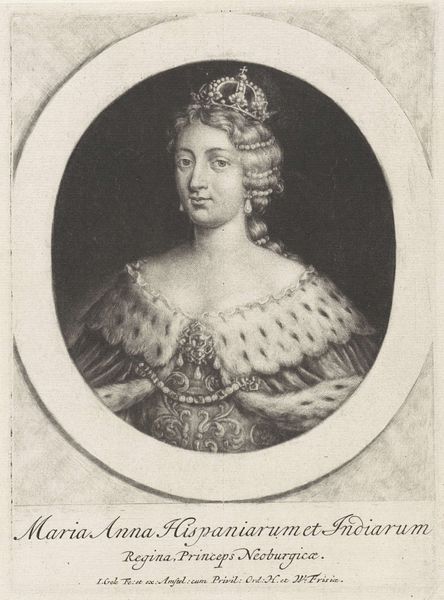
Dimensions: height 214 mm, width 138 mm
Copyright: Rijks Museum: Open Domain
Curator: I'm immediately struck by the formality of this portrait of Queen Mary II Stuart, likely created around 1805 by James Fittler, currently housed at the Rijksmuseum. There’s a somber quality, don't you think? Editor: Yes, a certain weight is visible in the subject's expression, and certainly communicated by the material—engraving—it’s interesting to see how a mass reproducible image seeks to represent power. The lines are so precise, etched deliberately. I find myself wondering about the labor involved, the craftsman meticulously creating this image, how that differs from the labor involved in Queenship? Curator: It certainly frames questions of class and gender, and who is granted access to image making in this moment, doesn’t it? Considering its creation, it seems important to acknowledge Queen Mary II Stuart lived over a century prior. This speaks to a desire to evoke a particular historical moment and monarch within a changing landscape. She and her husband reigned during a tumultuous period of religious and political conflict in England, and perhaps its from this that the gravity emerges. Editor: Exactly. Engravings like this allowed for wider distribution of imagery and consequently, ideologies. This piece straddles the line between high art and something more utilitarian, more aligned with historical documents or even political pamphlets. Was this intended as pure representation or did it carry a didactic intent? Curator: It's hard to say definitively, but the composition, with its Baroque influence and clear, direct presentation of the Queen, leans toward portraying legitimacy and perhaps, a nostalgic longing for stability. Editor: It really brings forth the material realities and consumption habits of the period too. Print was revolutionary, creating the possibility for people to amass artworks much cheaper than it cost to get them directly made. In a sense, the monarchy itself could then become commodified and therefore consumable through a purchase of a print of the Queen! Curator: And for me, the act of remembering, of picturing these complex figures through the lens of our current understanding of power and gender dynamics becomes paramount. Looking closely, the details in the queen’s adornments become powerful evidence of her own embodied labor to perform status through both wearing AND governing. It is as you mention, an uneasy but fascinating negotiation. Editor: Absolutely. Seeing art and visual media production this way offers important insight for evaluating power systems and cultural movements. It’s a valuable approach. Curator: Indeed, reflecting on historical figures using current methods provides such new lenses for re-evaluating narratives, giving a much needed opportunity to think beyond the familiar stories.
Comments
No comments
Be the first to comment and join the conversation on the ultimate creative platform.
